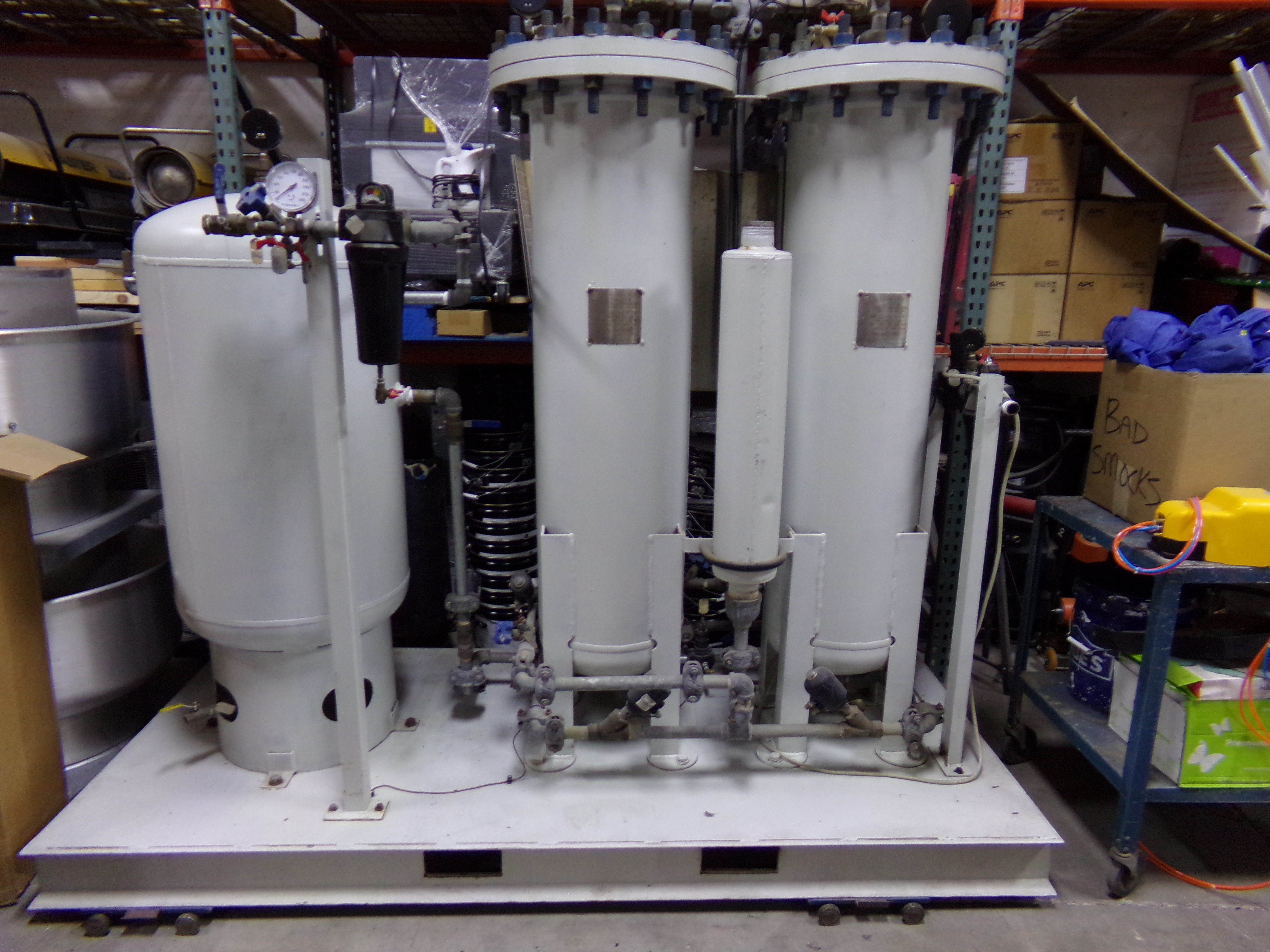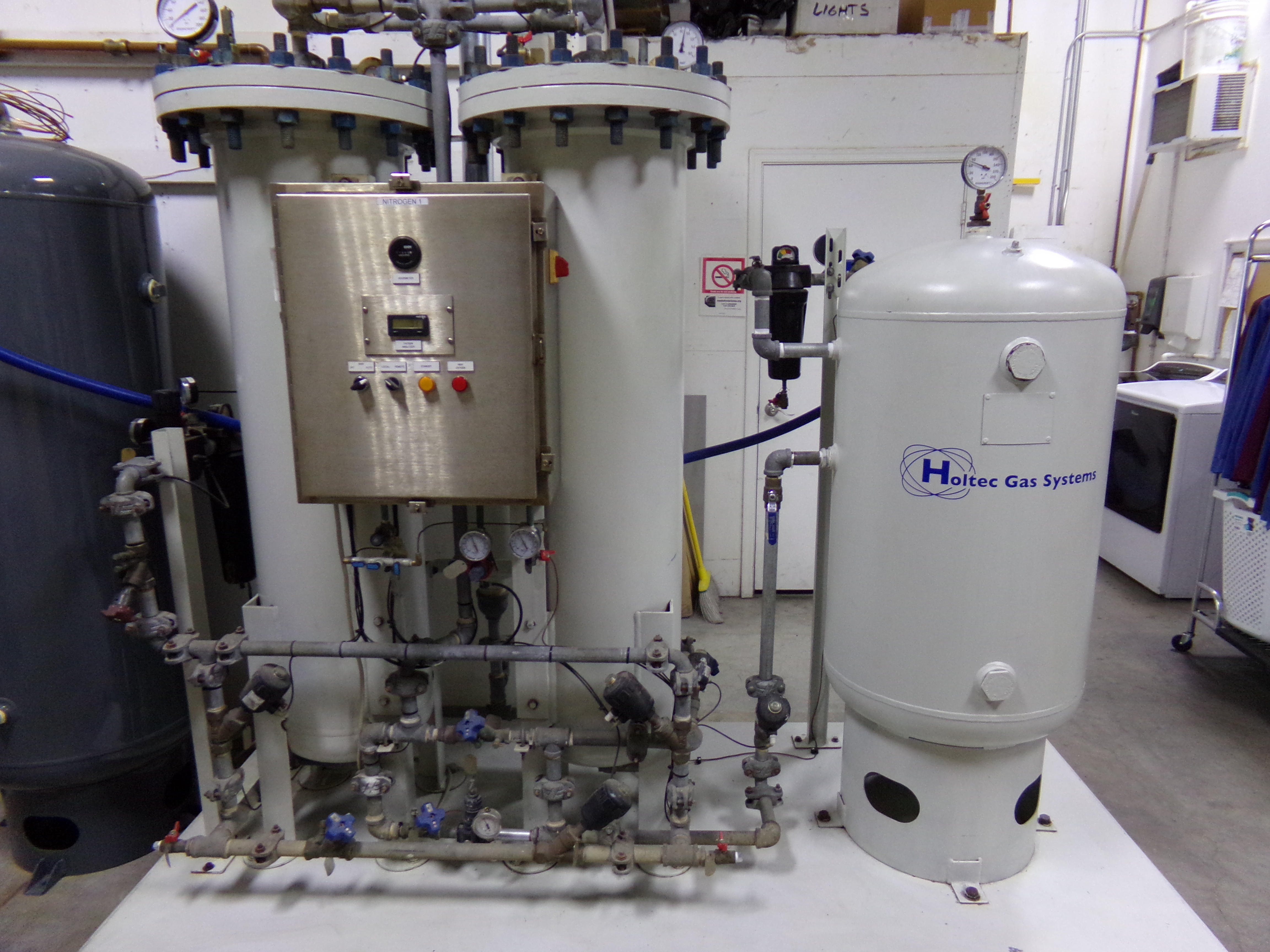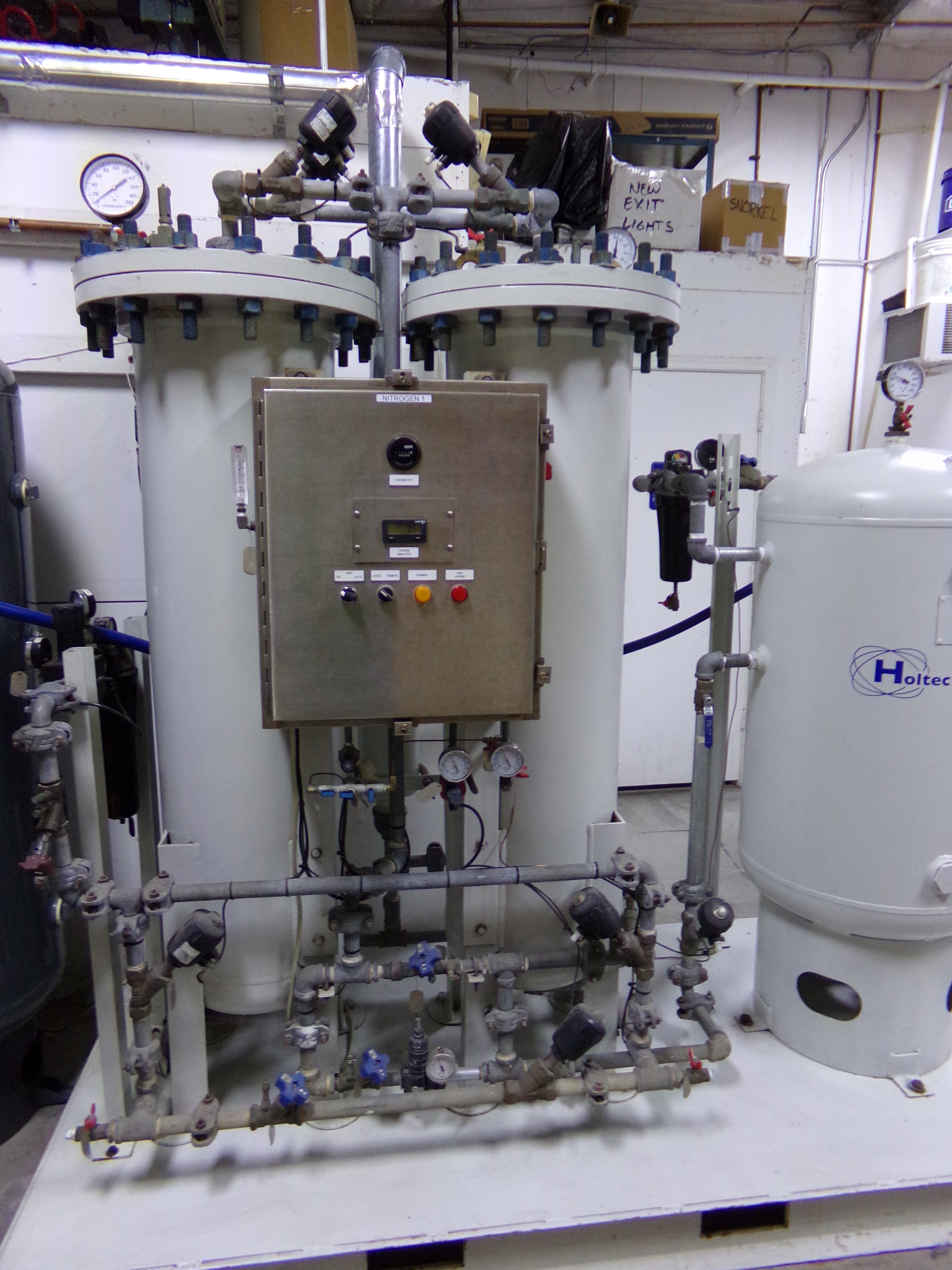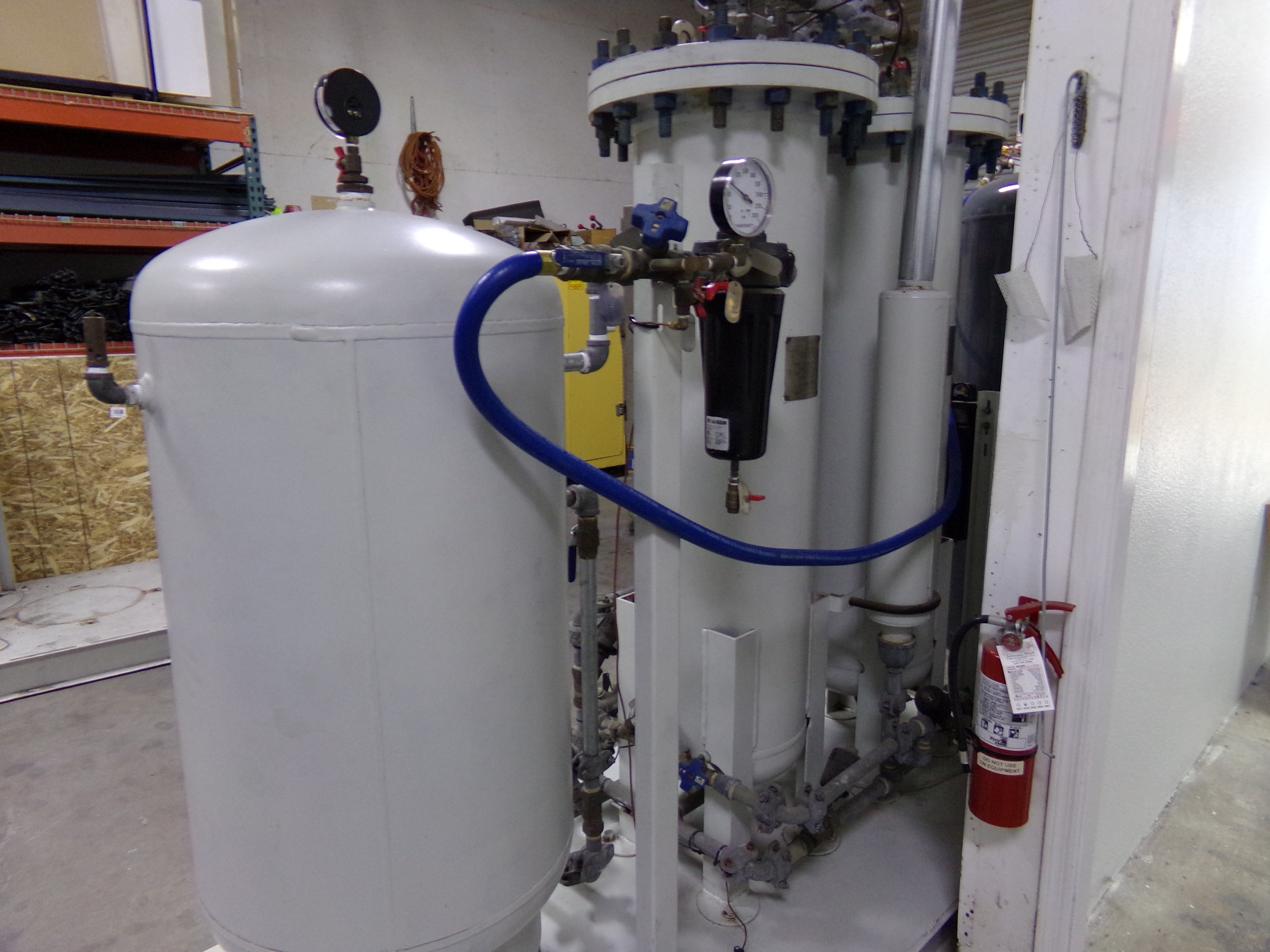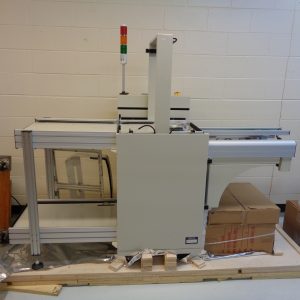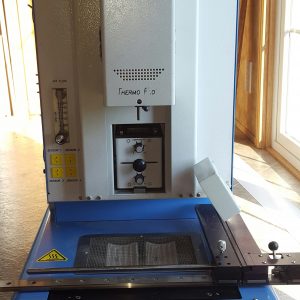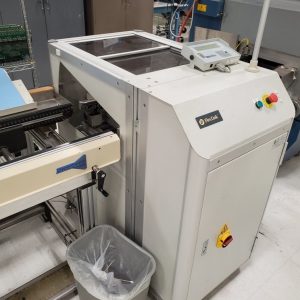Products

Dage XD7600-NT-250 X-Ray
July 21, 2020
MyData Mycronic MY100SXe-14 2012 T3, Hydra, SW 2.9 SN# 140369
August 13, 2020Holtek HPN-100 generator
HPN-100 Pressure-Swing Adsorption (PSA) nitrogen generator. If operated at 80 °F and 99.999% purity (Max 10 ppm O2), the combined capacity of the systems will be 10 SCFM. If operated at full capacity, the systems will consume 81 SCFM of clean, dry, oil-free compressed air. The PSA process is temperature dependent, so if conditions are warmer than 80 °F, capacity will begin to decrease.
Each system will consist of inlet air filter, PSA adsorbers, control panel, piping and valve assembly,
nitrogen receiver tank, and product filter, mounted on a common skid for easy site installation, and
is ready for connection to your compressed air supply (by others). Please be aware that moisture,
oil, and other contaminants will damage the adsorbers and repairs would not be covered under
warranty.
1. HPN-100 Performance:
N2 Flow: 4 SCFM
N2 Purity: 99.999% (Max 10 ppm O2)
N2 Pressure: 80-90psig
N2 Dewpoint: -40 °F (@ 0 psig)
Ambient Air Temperature: 60-80 °F
Feed Air Flow: 45 SCFM (±5%)
Feed Air Pressure: 120 psig
Feed Air Dewpoint: < 38 °F
Feed Air Oil Content: Oil-free
2. Piping Connections:
Inlet (N2 Skid edge): 1½”
Outlet (N2 Skid edge): 1”
3. Scope of supply:
3.1 PSA System (refurbished):
0.01 Micron inlet filter
ASME VIII Div 1 adsorber vessels filled with Carbon Molecular Sieve
Relief valves
N2 pressure switch for automatic standby operation
Air actuated switching valves
Pressure gauges
Oxygen analyzer sampling system (nylon tubing)
Control panel with:
o On/Off power switch
o PLC control with touch-screen interface (HMI)
o Switching for continuous or standby operation (HMI feature)
o Operating hours recorder (displayed on HMI)
o Electrical terminal blocks and wiring
o Solenoid valves (for switching valves)
o 0-25% O2 Analyzer and sensor
Manual control valves for setting N2 flow and purity
Non-return valves
Manual valves
Silencer for waste gas
Operating and maintenance Manual (digital only, unless otherwise agreed)
Fittings, Piping, and Tubing
Pressure regulators
240 gallon nitrogen receiver
0.01 Micron product filter
3.2 Optional:
Upgrade to 0-1000 ppm O2 analyzer and zirconium-oxide sensor
Replace nylon sample tubing with copper tubing/brass fittings (control tubing will remain nylon)
4. General Specifications:
4.1 Indoor/Outdoor operation: Indoor
4.2 Paint: Vendor Standard
4.3 Electrical Code: NEC
4.4 Hazardous Area Classification: Safe Area/non-classified
4.5 Enclosure:
PSA System: None
Control Panel: Nema-4
5. Process Description, Typical:
The Nitrogen Generator is a two-bed adsorption system. It consists of two adsorber vessels filled
with CMS, a valve assembly, air receiver (if needed/by others), refrigeration dryer, filters and a
nitrogen product receiver. Compressed air (78%nitrogen, 21% oxygen, <1% argon) at about 110 psig
/ 7.6 barg and normally 70 °F / 21 °C is dried in a refrigeration dryer and passed through a 1μ
coalescing filter, a 0.01μ particulate filter and a carbon filter (if needed/by others) for removal of
oil, water and particles. Clean air is directed to one of the adsorber beds where oxygen and water
vapor is adsorbed faster than nitrogen in the pore structure of the CMS, thus increasing the
nitrogen purity of the product gas stream to 99.999%. This product flows out of the top of the
adsorber bed, through a flow control valve, and into the product buffer tank at a pressure slightly
below the feed air pressure.
A portion of the intermediate product produced is directed through the purge orifice. This nitrogen
is allowed to flow back through the other adsorber sieve bed and out through the exhaust line at
atmospheric pressure. This action purges the CMS of oxygen, and prepares the bed for the next
cycle. The pressure in the adsorber vessels is equalized after one to two minutes before the next
cycle starts. The beds switch roles; the first bed is purged while the second bed produces nitrogen
product. The active bed will remain on-line until just prior to becoming saturated with oxygen.
When the cycle is completed, the controller will exhaust the saturated bed, and pressurize the fresh
adsorber bed. This allows a continuous flow of nitrogen gas from the unit for as long as the unit is in
operation.
Oxygen enriched waste gas is piped to the atmosphere through a silencer.
Dry nitrogen product stream, with the specified 0.001% O2 content, exits the adsorber vessels and is
stored in a nitrogen receiver. Nitrogen purity is checked continuously with an oxygen analyzer.


